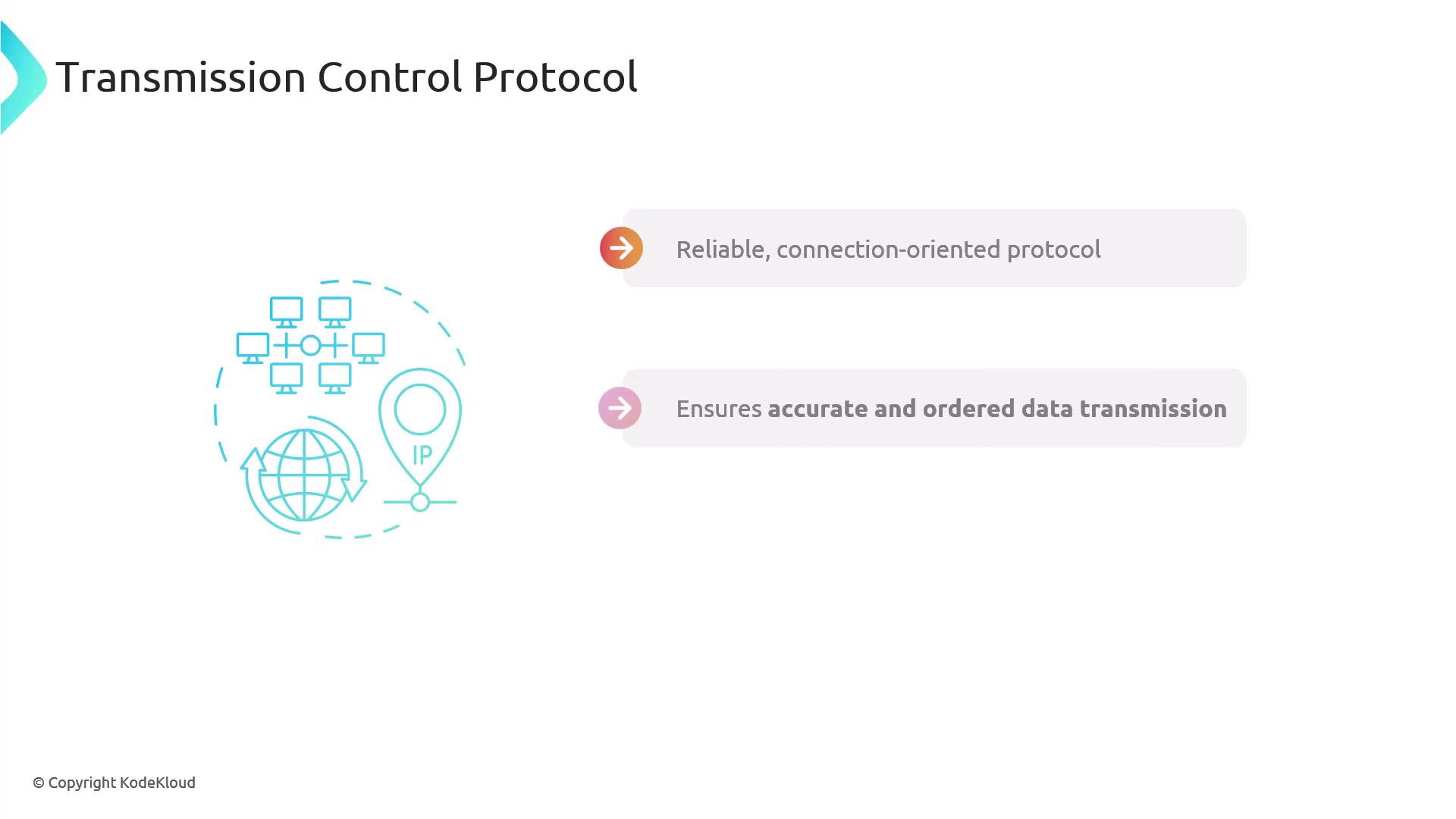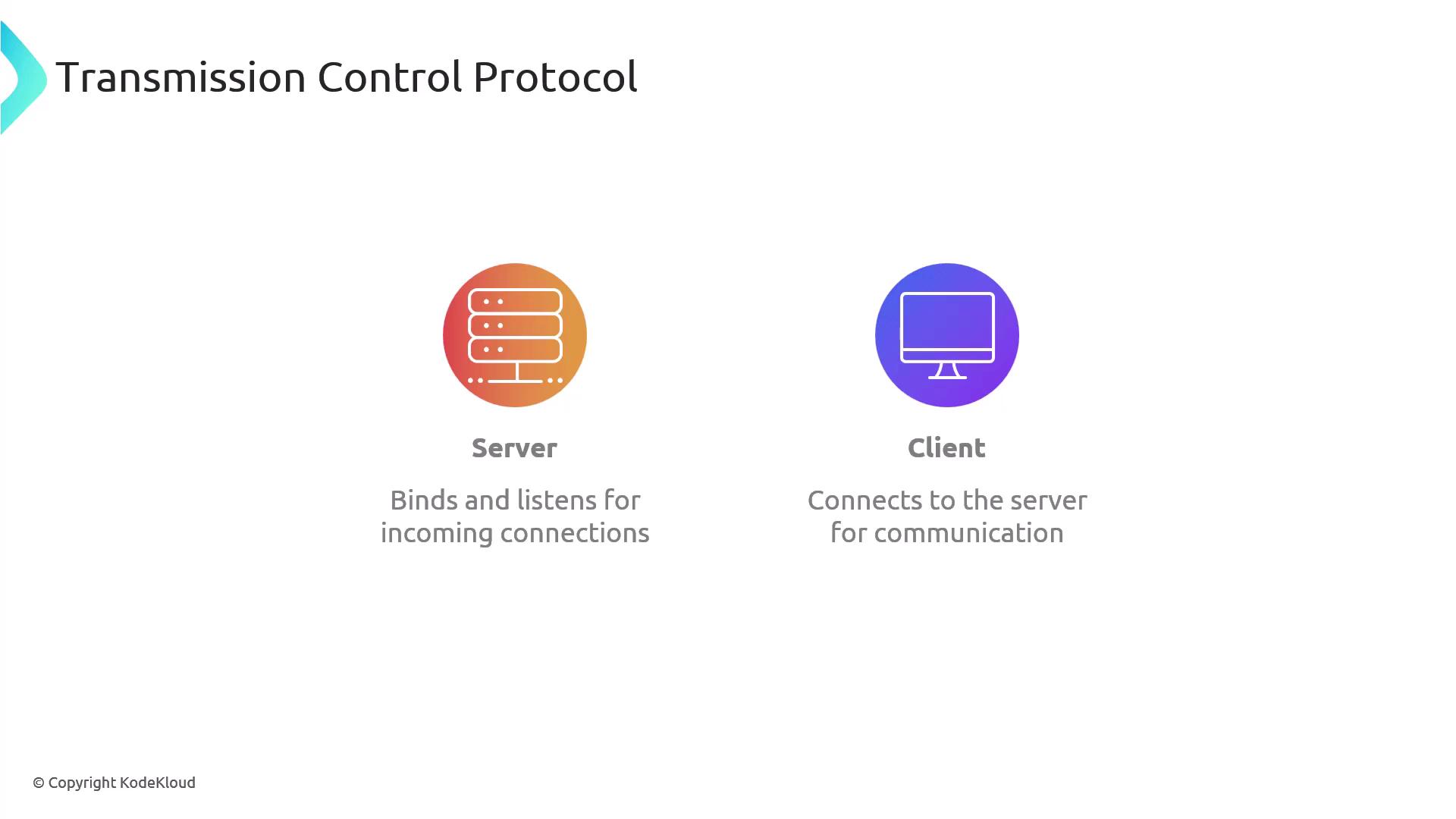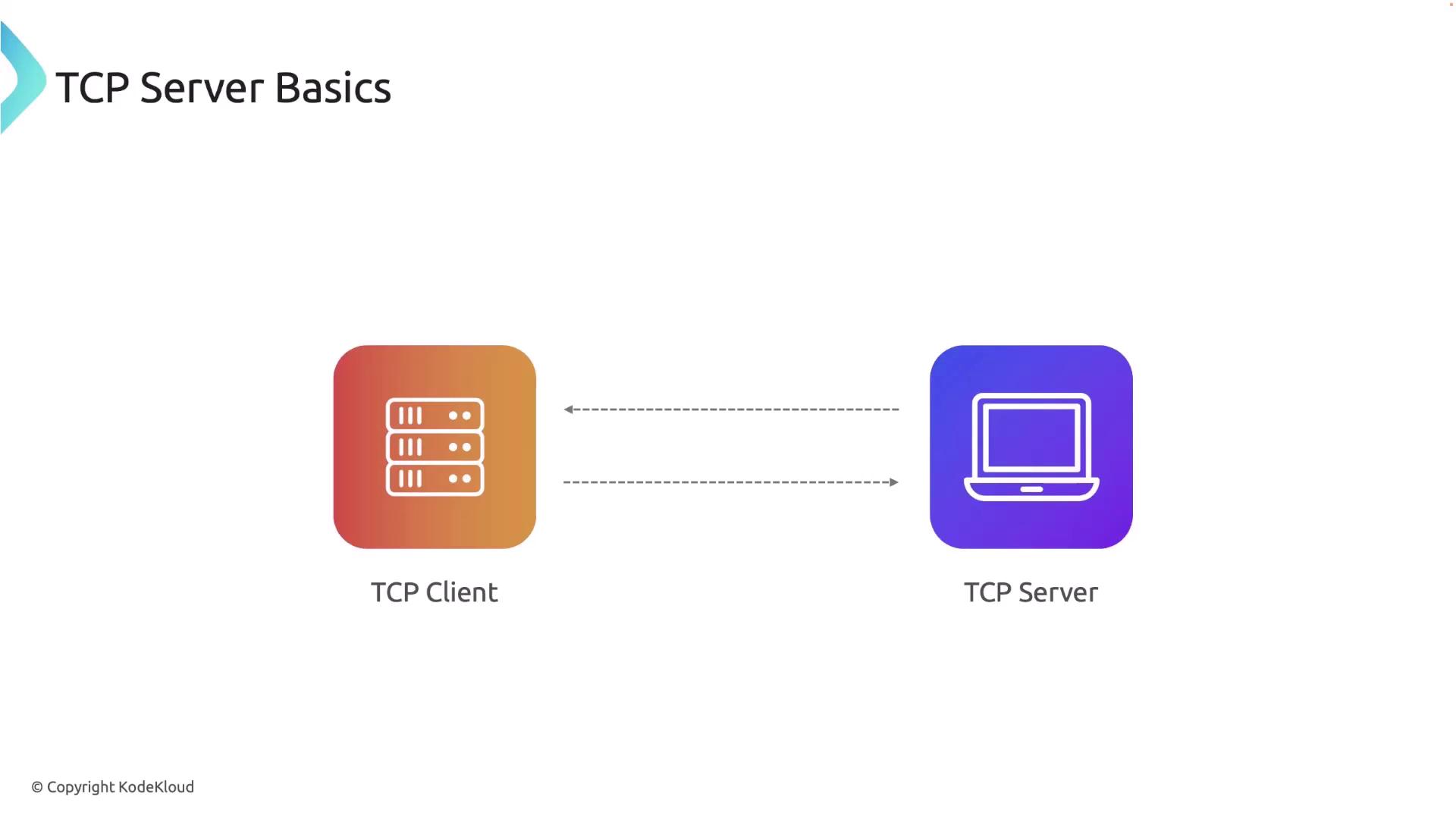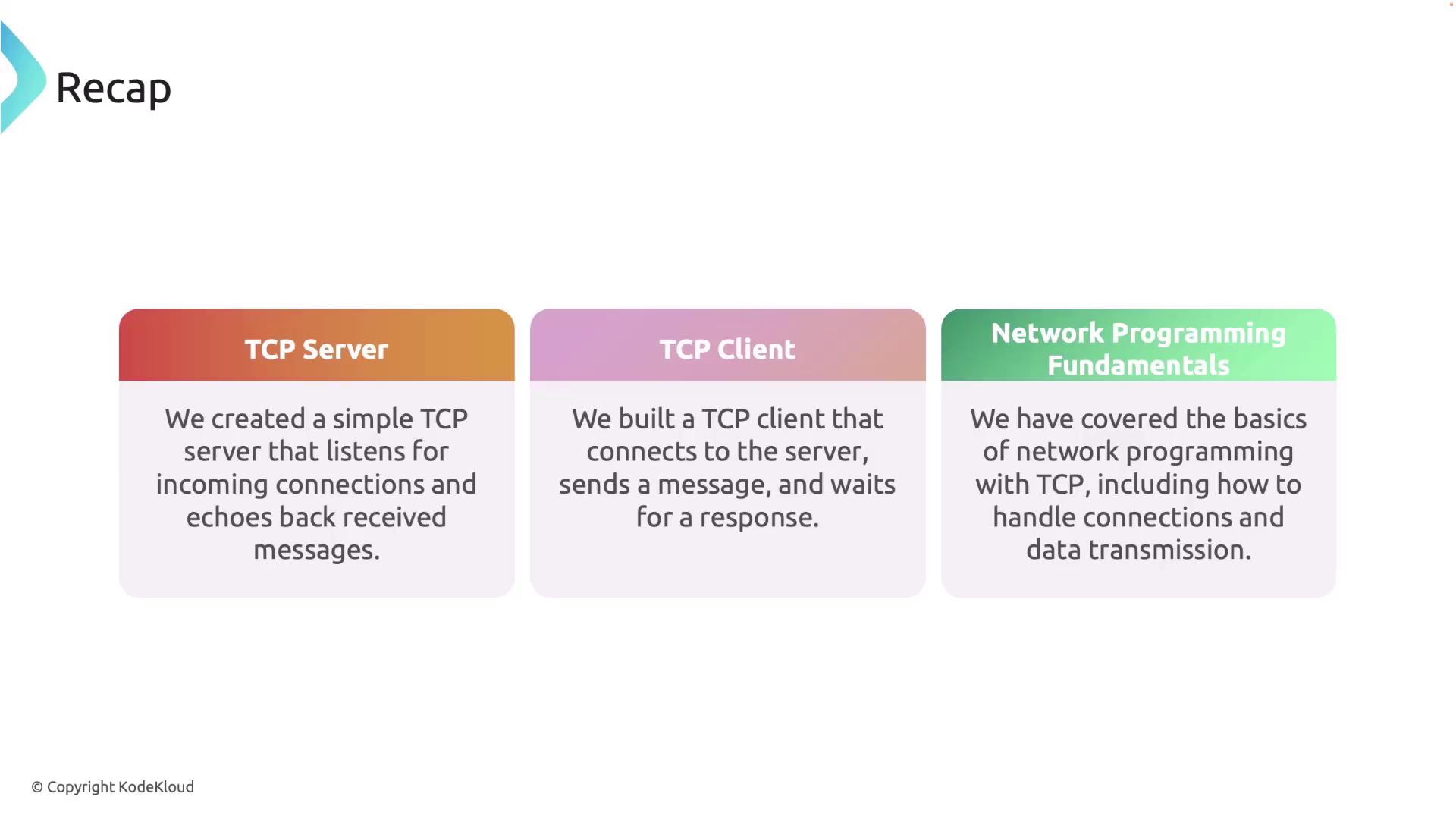Rust Programming
Network Programming and File Handling
Building TCP Clients and Servers
Welcome back to this lesson. In this session, we will build a TCP client and server using Rust's standard libraries. TCP (Transmission Control Protocol) is a reliable, connection-oriented protocol that guarantees data is transmitted accurately and in order. This reliability is crucial for applications where data integrity is essential, such as web servers, database communications, or real-time data exchanges.

Our tutorial begins with creating a basic TCP server that listens for incoming connections. Afterward, we will develop a TCP client that connects to the server.

Setting Up a Simple TCP Server
A TCP server waits on a specified address and port for incoming connections. Once a connection is established, it can both send and receive data. Follow these steps to create a simple TCP server:
Open your terminal and create a new Cargo project for the TCP server:
cargo new my_tcp_serverOpen the project in Visual Studio Code and navigate to the
main.rsfile. Begin by importing the necessary modules:TcpListenerfor listening to incoming connections,TcpStreamfor handling the connection, and the I/O traitsReadandWritefor data streaming.Implement the function to handle client communication. This function continuously reads data from the TCP stream into a 512-byte buffer. If a client disconnects or an error occurs, the connection is gracefully terminated. Otherwise, the server echoes the received data back to the client and prints it to the console.
use std::net::{TcpListener, TcpStream}; use std::io::{Read, Write}; // Function to handle communication with a client fn handle_client(mut stream: TcpStream) { let mut buffer = [0; 512]; // Buffer to hold incoming data loop { match stream.read(&mut buffer) { Ok(0) => break, // Connection closed by client Ok(n) => { stream.write(&buffer[0..n]).unwrap(); // Echo the received data back println!("Received: {}", String::from_utf8_lossy(&buffer[0..n])); // Log the received data } Err(e) => { println!("Error reading stream: {}", e); // Log any errors break; } } } } fn main() { let listener = TcpListener::bind("127.0.0.1:7878").unwrap(); println!("Server listening on port 7878"); for stream in listener.incoming() { match stream { Ok(stream) => { println!("New connection: {}", stream.peer_addr().unwrap()); handle_client(stream); } Err(e) => { println!("Connection failed: {}", e); } } } }
This server is configured to listen on 127.0.0.1:7878. Every time a client connects, the server reads the incoming data, echoes it back, and logs the details to the console. Any errors or disconnections are recorded appropriately.
Build the Server
Compile your TCP server using the following command:
cargo build --quiet
After building, run the server and prepare to test it.

Creating the TCP Client
Now, let’s develop the TCP client. Follow these steps:
Create a new Cargo project for the TCP client by running:
cargo new my_tcp_clientOpen the project in Visual Studio Code and edit the
main.rsfile. Import the required modules forTcpStreamand I/O operations.The TCP client will attempt to connect to the server at
127.0.0.1:7878. Upon a successful connection, it sends a message ("Hello, server!") to the server and waits for the echoed response.use std::io::{Read, Write}; use std::net::TcpStream; fn main() { match TcpStream::connect("127.0.0.1:7878") { Ok(mut stream) => { println!("Successfully connected to server"); let msg = b"Hello, server!"; stream.write(msg).unwrap(); println!("Sent: Hello, server!"); let mut buffer = [0; 512]; match stream.read(&mut buffer) { Ok(n) => { println!("Received: {}", String::from_utf8_lossy(&buffer[..n])); } Err(e) => { println!("Failed to receive data: {}", e); } } } Err(e) => { println!("Failed to connect: {}", e); } } }
This code connects the client to the server, sends the greeting message, and then reads the echoed message from the server, printing it to the console.
Build the Client
Build the TCP client using:
cargo build --quiet
Make sure to run the TCP client after starting the TCP server.
When the client runs, you should see the following logs:
Successfully connected to server
Sent: Hello, server!
Received: Hello, server!
Meanwhile, the server logs will show:
Server listening on port 7878
New connection: 127.0.0.1:<unique_port>
Received: Hello, server!
Each client connection results in a unique socket address, which is logged by the server.
Recap
In this lesson, you learned how to:
Build a TCP Server in Rust
- Listens on
127.0.0.1:7878. - Uses a 512-byte buffer to read client data.
- Echoes the received data back to the client.
- Logs connection details and errors.
- Listens on
Develop a TCP Client in Rust
- Connects to the TCP server on
127.0.0.1:7878. - Sends a greeting message ("Hello, server!") to the server.
- Receives and logs the echoed message from the server.
- Connects to the TCP server on

With these foundational concepts in TCP networking using Rust, you are ready to explore more complex network applications. In the next lesson, we will discuss UDP and its differences from TCP.
See you in the next lesson!
Watch Video
Watch video content